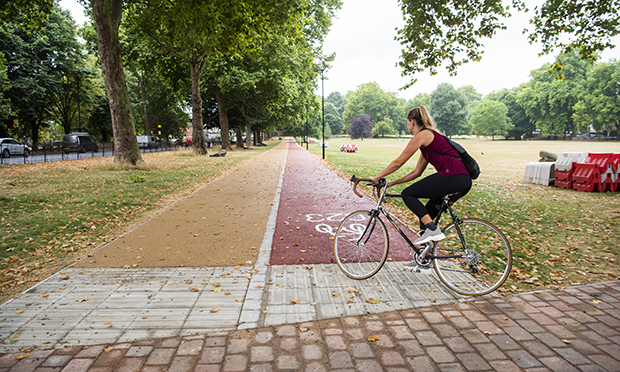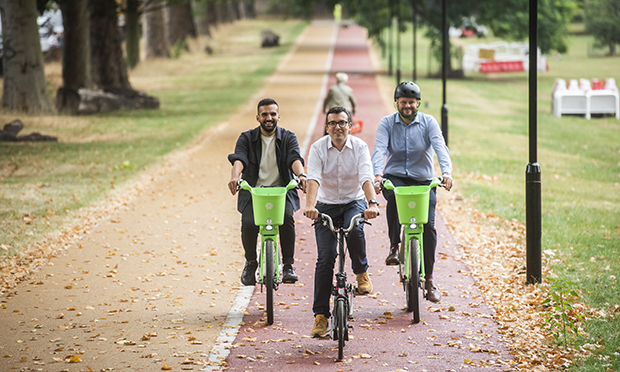New cycle lanes in Clapton plug ‘key gap’ between Hackney and Waltham Forest

A cyclist tries out the new lane running through Millfields Park. Photograph: Hackney Council
New cycle lanes linking Lea Bridge to Clapton have now opened along the north of Millfields Park.
Thousands of commuters will be able to use the protected lanes on Lea Bridge Road, opening up more possibilities for travel in London’s cycling capital.
The cycle lanes, funded by Transport for London (TfL) and built by Hackney Council, feature new lighting and landscaping as well as a number of entry and exit points.
London’s walking and cycling commissioner Will Norman said: “It’s great news that these protected cycle lanes have now opened in Millfields Park, filling a key gap in the network and connecting Waltham Forest and Hackney for people cycling.
“We’ve seen a huge rise in walking and cycling over the past two years, as more and more Londoners enjoy using sustainable ways to get around the capital.”

L-R: Cllr Mete Coban, Will Norman and Hackney Mayor Philip Glanville try the new tarmac. Photograph: Hackney Council
Norman added: “Supporting more Londoners to cycle by providing safer routes is absolutely essential to a more sustainable future for London, and this is at the heart of the Mayor’s pledge to build a better London for everyone.”
The cycle lanes are part of a plan to transform the Lea Bridge roundabout.
Hackney’s transport chief Cllr Mete Coban said: “This new cycle lane in Millfields forms the first part of an ambitious new safe route between Lea Bridge and Dalston, which will transform Lea Bridge roundabout and get even more people cycling in the borough.”
He added: “Hackney is London’s capital of cycling and we’re really proud to be working with TfL to expand our safe cycle routes.
“This builds on the benefits of our new School Streets and low traffic neighbourhoods, which have seen cycling rates increase across the borough.”
The news follows a pledge by the council to install 675 new bike storage hangars across Hackney, amounting to more than 4,000 individual spaces.
